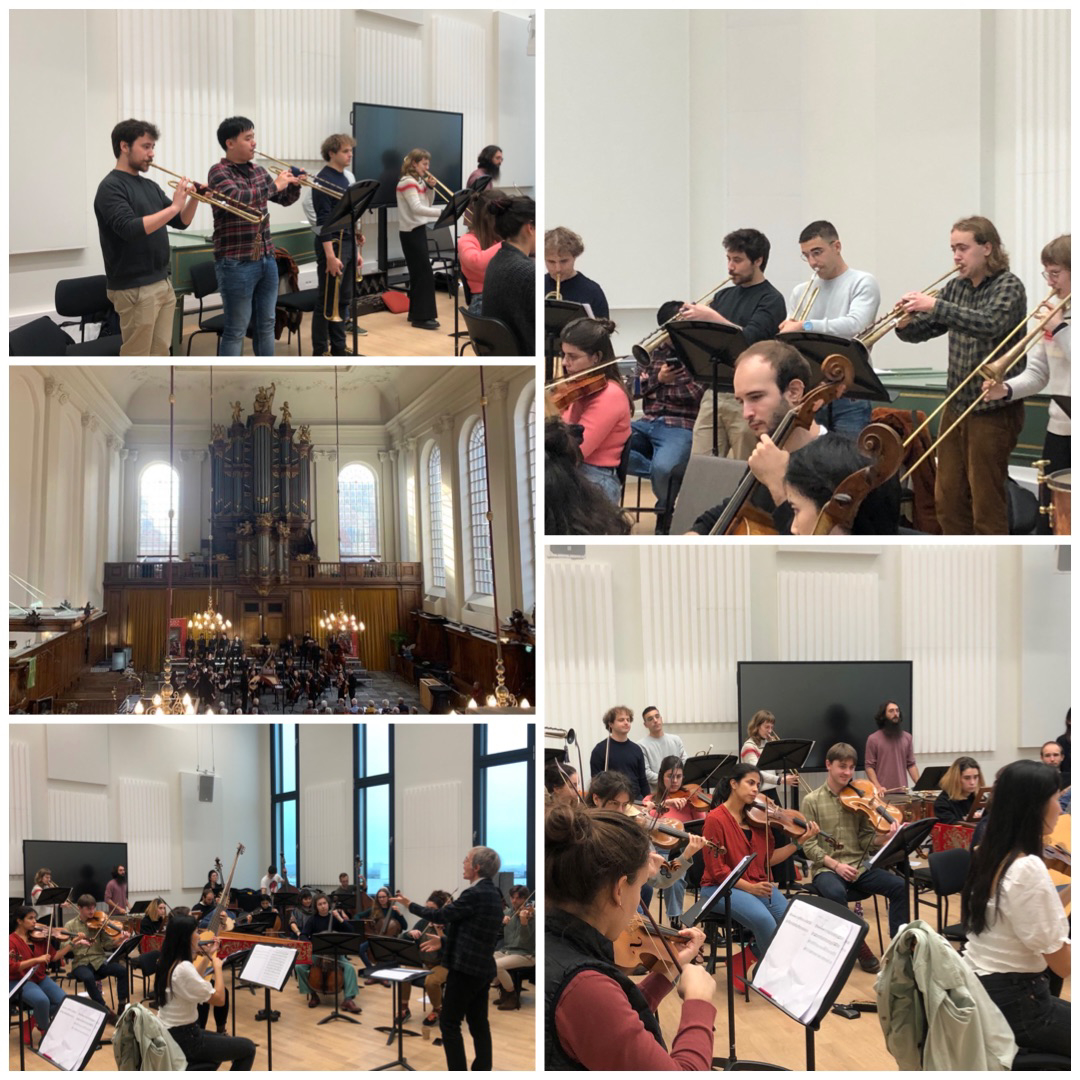In order to assess the validity of a speculative theory that has a strong influence on performance practice, it seems crucial to be able to check aurally, so to speak, the formulated hypothesis. The above-mentioned orchestral production in The Hague was shaped to give, to a good extent, an ideal frame for that. The audio and video material part of this presentation was recorded during the final performance and can be considered the main outcome of my master research.
More than in words, music and music research has to happen in sound, and it is in an aural realisation that any theory has to gain its validity. In this respect, having constructed a hypothetical version of Corelli's Sinfonie with trumpets in accordance with historical premises and assumptions, would not necessarily be enough in the absence of a convincing musical result. Obviously, determining the borders between what is artistically and musically convincing and what it is not, is a very slippery terrain and one should acknowledge how an assessment might be influenced by human and personal attitudes, bias, expectations, by cultural preparation and historical consciousness and, in short, by a series of elements lowering by far the degree of reliability of the assessment itself. Nevertheless, and acknowledging all the above, an anonymous survey was proposed to all the musicians involved in the production and to some of the audience who attended the concert. This was done in order to ascertain the first impressions of the direct and indirect participants to this live experiment, not to prove anything, but to add an extra element of measurement of the validity of the formulated hypothesis. We should not underestimate the fact that a lot of information about the use of trumpets in Roman Sinfonie around 1700 comes from contemporary reports of these events transmitted by the audience of the time. In view of that, some of the questions of the survey were formulated in the hope of being able to draw some parallels between the answers of today’s audience and the XVII century's descriptions.
The questions, slightly differently formulated for audience, for trumpet players and for the other instrumentalists, aimed at enquiring the following aspects: firstly, as the program was including both non transformed pieces and re-elaborated ones, if any noticeable difference could be noticed between them. The trumpet players, in particular, were asked to give their opinion about the style of the newly composed trumpet parts. Secondly, what was the general impression of the use of the trumpets in Corelli Opus 6. Thirdly, the recipients of the survey were asked to express their opinion on the musical result of the experiment and if they found the addition of trumpets musically convincing or not. Fourthly, everyone was asked to rate, with a mark from 1 to 5, the success of the hypothesis proposed by the research, based on the artistic result of the production, where 1 meant not successful and 5 very successful. Any further comment could be added at the end of the survey.
The answers to the first two questions pointed to a general sense of festivity and splendour conveyed by the pieces with the trumpets in comparison to the other pieces in the program. This is in absolute accordance with the philosophy of the trumpets' use, whose function has always been to add a note of grandiosity and magnificence to the music in which they were playing. More than one answer was stressing the loudness of the trumpets in comparison to the string's sound and suggesting that a “better” balance might have been achieved in a different acoustic, perhaps outdoors, or with a larger violin band. Both remarks are appropriate. Indeed, the trumpets were often taking part in outdoor performances and indeed, particularly during those events, the size of the orchestra was bigger than the one assembled for the project held in The Hague. At the same time, the Roman contemporary sources also insist on the loudness of the trumpets, hence, for instance, the already quoted Sinfonia strepitosa which means, literally, “loud music”. The trumpet players found the idiom of the newly composed parts consistent with the standard baroque writing for trumpet. Some remarked that in the two Lulier's Sinfonie (which includes original trumpet parts), the trumpets had a more prominent role than in the concertos Opus 6 with added trumpets. Unanimously, the participants of the survey found the result of the project musically convincing and, when asked to rate the success of the master thesis hypothesis from 1 to 5, they attributed only grades 4 and 5, with an average of 4,8. Overall, the survey gave very positive feedback on the project and on its musical result. As such, within the boarders already stressed earlier in this paper about the legitimacy of an assessment based on a subjective artistic judgement, I propose that its results are considered an extra argument in favour of the validity of the artistic proposal put forward in the present research. 76 Needless to say, everyone reading this exposition and listening to the audio and video material included in it, can formulate their own opinion and agree or disagree about its outcome.
